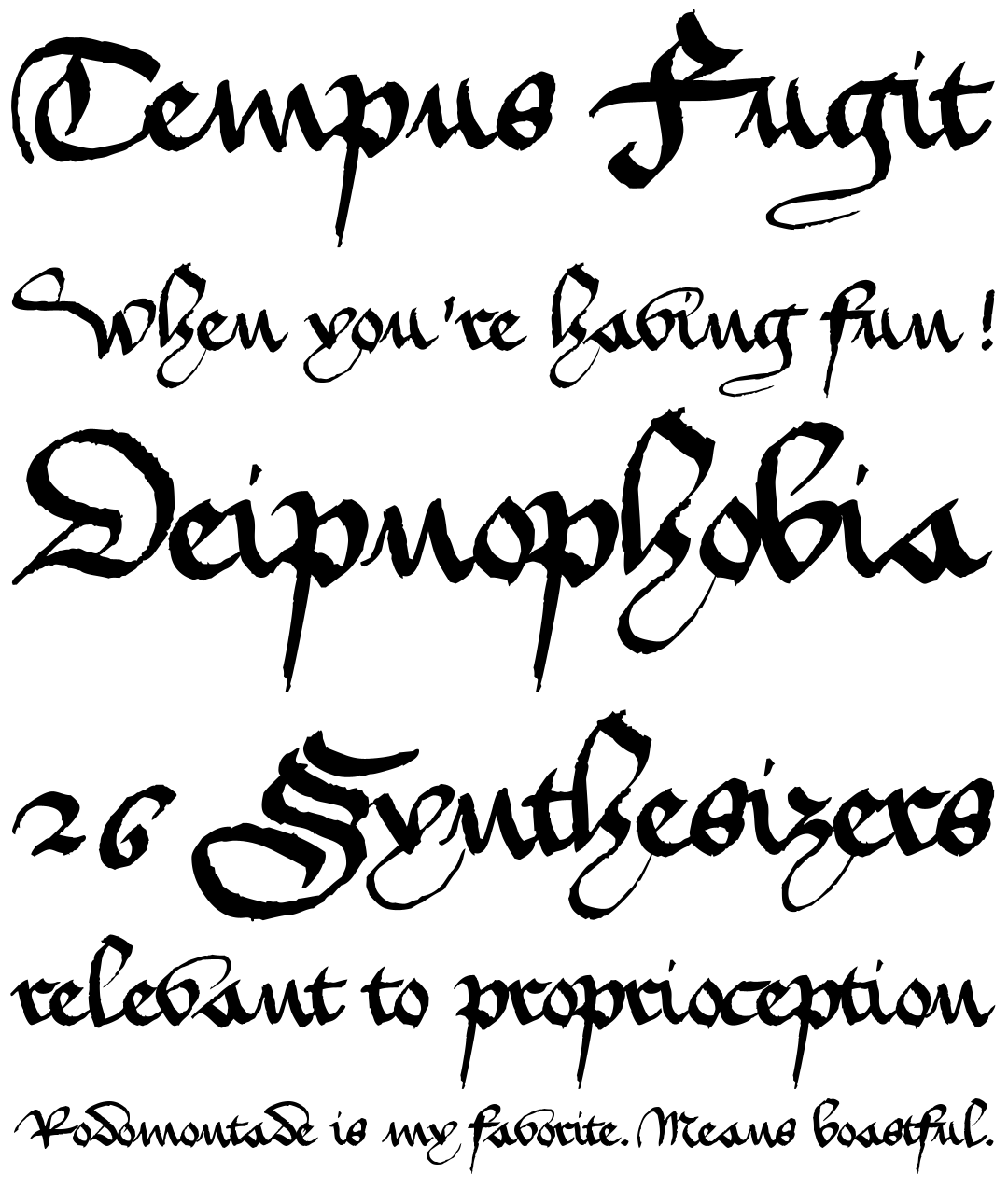
1420 Gothic Script Fonts
Blackletter (sometimes black letter), also known as Gothic script, Gothic minuscule, or Textura, was a script used throughout Western Europe from approximately 1150 until the 17th century. It continued to be commonly used for the Danish, Norwegian, and Swedish languages until the 1870s, Latvian language until the 1930s, and for the German language until the 1940s, when Hitler officially.
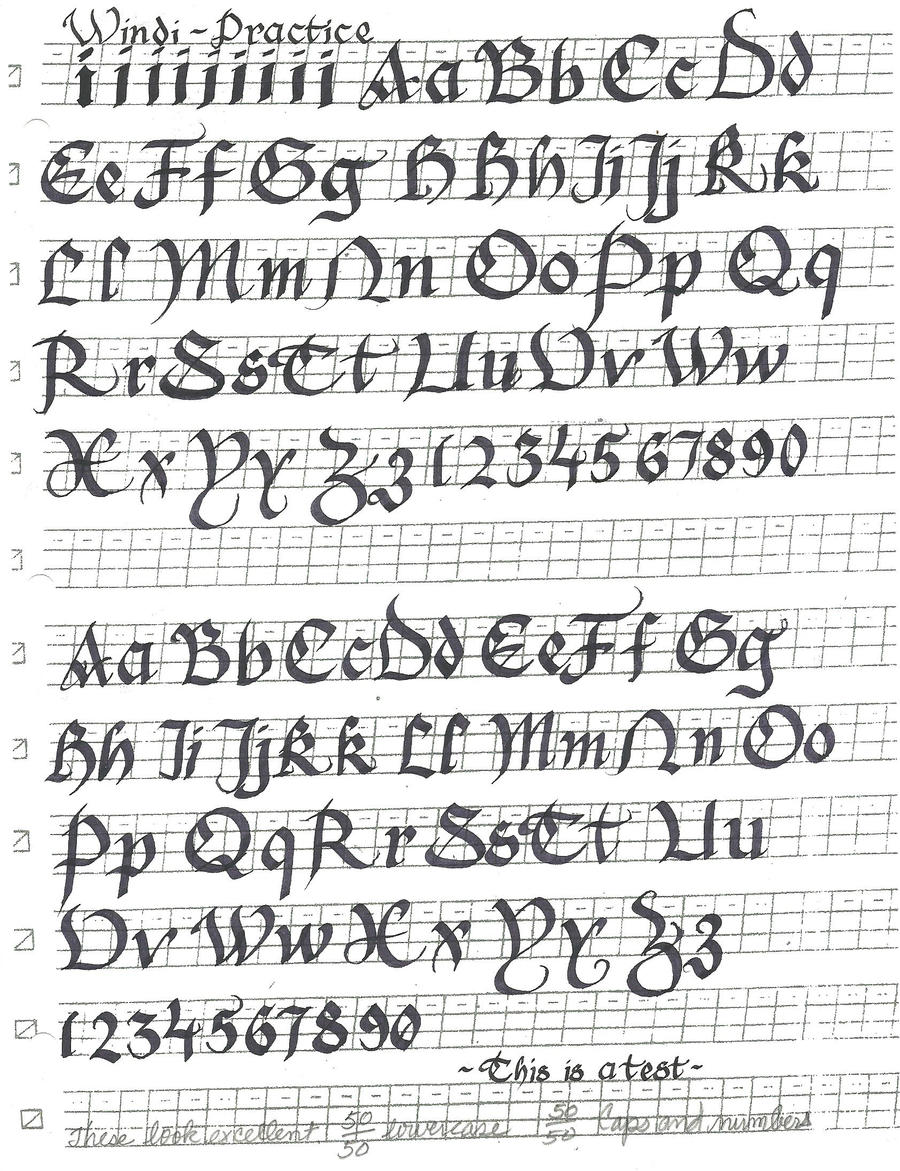
Gothic Cursive calligraphy font by WindblownRebel on DeviantArt
Gothic writing: majuscule gothic letters A-Z. This alphabet is written around six nib-widths high. I've laid out the letters stroke by stroke, with the newest stroke shown in red each time. Thin vertical lines are formed by turning the pen round to point directly to the left and then drawing downwards.

Pin on Calligraphy writing
Gothic . Gothic is an extinct East Germanic language that was spoken in parts of the Crimea until the 17th century. It was originally written with a runic alphabet about which little is known. One theory of the origins of Runes is that they were invented by the Goths, but this is impossible to prove as very few inscriptions of writing in Gothic runes survive.

Gothic Calligraphy&Lettering with parallel pens and steel nibs
Understanding Meyers Orts: Translating Guide for the Directory of the Towns and Places in the German Empire, by Fay S. Dearden, is effectively a manual to understanding and reading this old gazetteer. This spiral-bound guide demonstrates how to read Meyers Orts entries as well as understanding, translating, the old Gothic script.
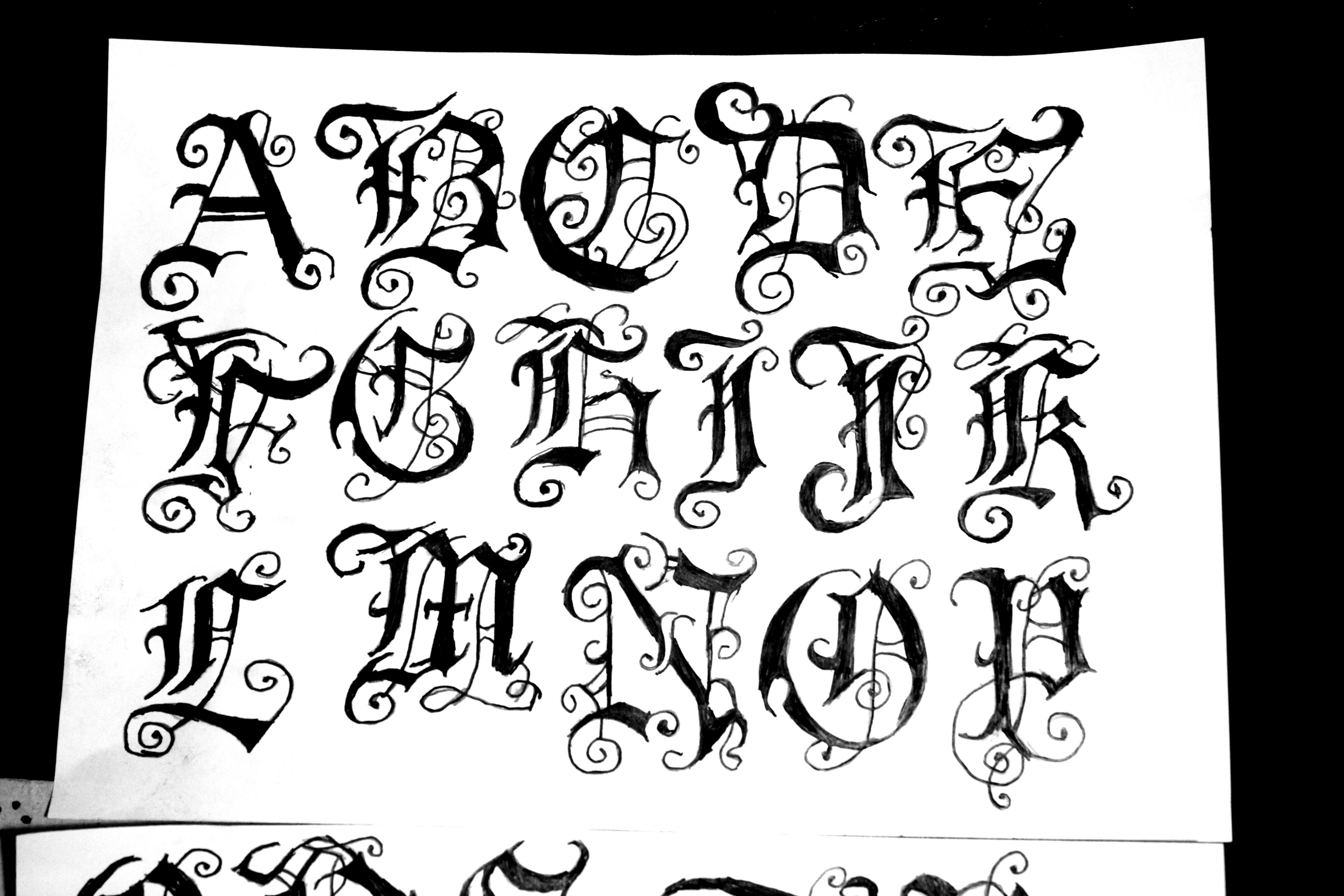
Medieval Traditional Calligraphy Alphabet I hope you all will learn
4. Practice lower-case letters first, then upper-case. Upper-case Gothic calligraphy tends to be more ornate than lower-case letters, with extra serifs and flourishes that can be difficult for a beginner. Take your time studying lower-case letters first. Once you're comfortable with those, move on to capital letters.
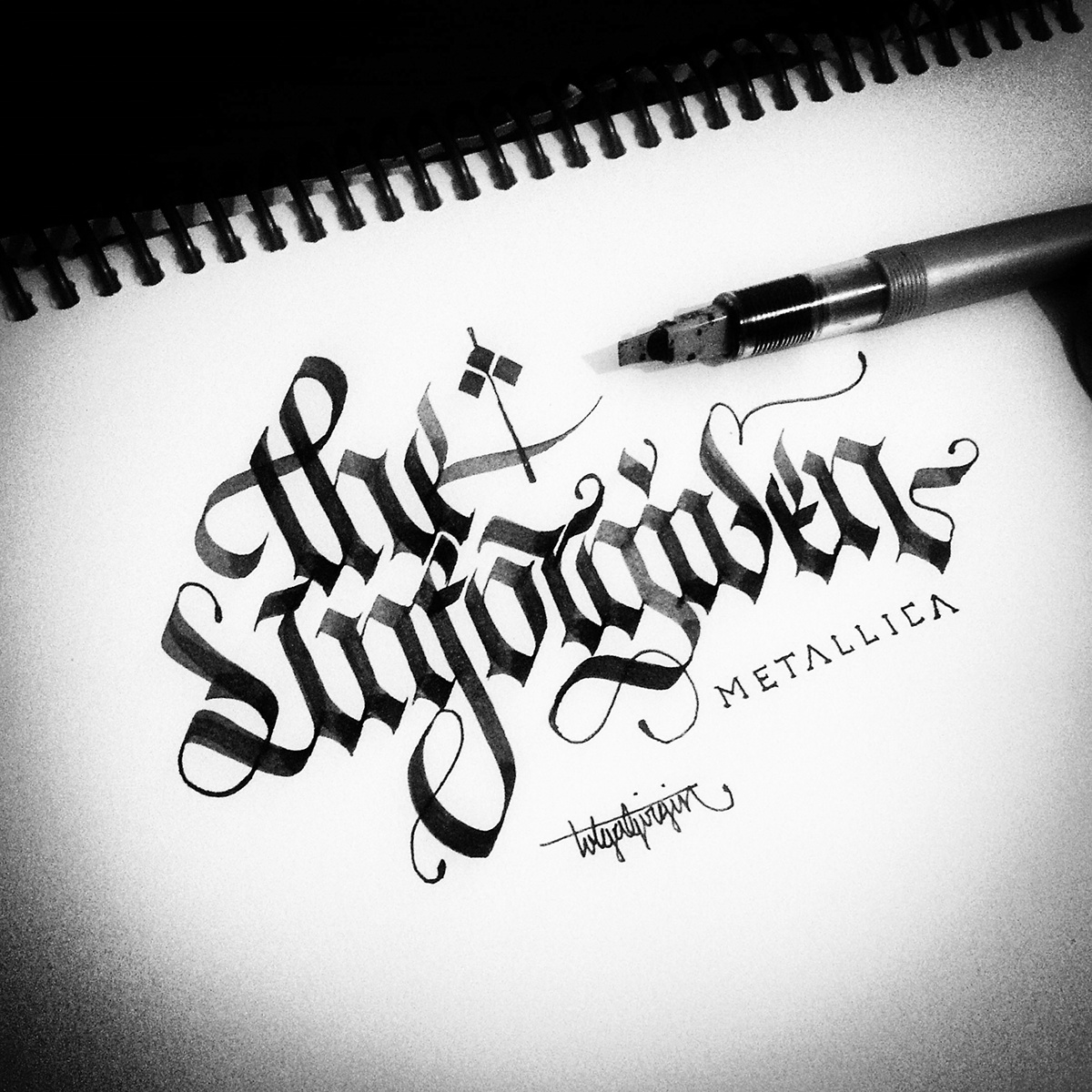
Gothic Calligraphy&Lettering on Behance
Origins of Gothic Lettering. The word 'Gothic' derives from the name of the historical Gothic period when such alphabets were most used - basically, the Middle Ages from around 1200-1500. 'Gothic' also suggests Germanic origins, and it is indeed a very Germanic script. Gothic fonts were used in printed books in Germany right up to the.
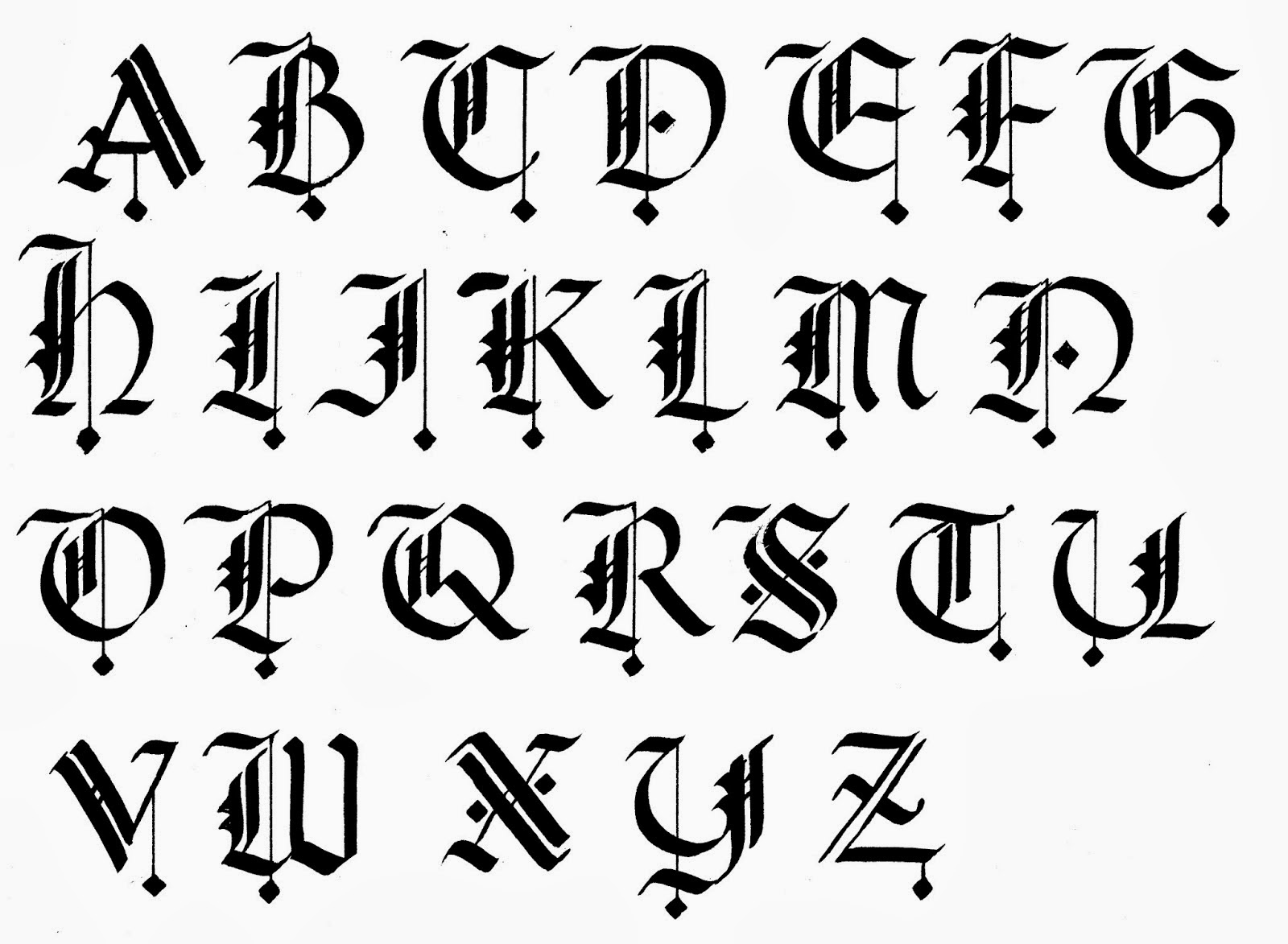
Gothic Handwriting Hand Writing
Calligraphy - Black Letter, Gothic, 9-15th Century: Carolingian minuscule remained the unrivaled book hand of western Europe through the 9th century, when a trend away from this official imperial standard appeared in some places. For example, in the manuscripts written at Sankt Gallen (Switz.) near the end of the 9th century and during the 10th, scribes tended to compress the letters laterally.
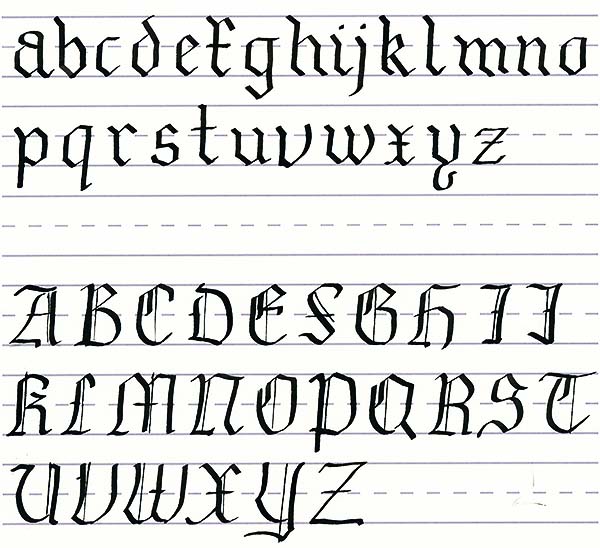
Mastering Calligraphy How to Write in Gothic Script
Gothic Alphabet - Step by Step These Gothic alphabet tutorial pages are my online effort to give you a one-to-one lesson in how to write a particular form of Gothic lettering. Note: I don't teach the letters in alphabetical order. It's easier and quicker to start with the simpler forms and move on to the more complicated.
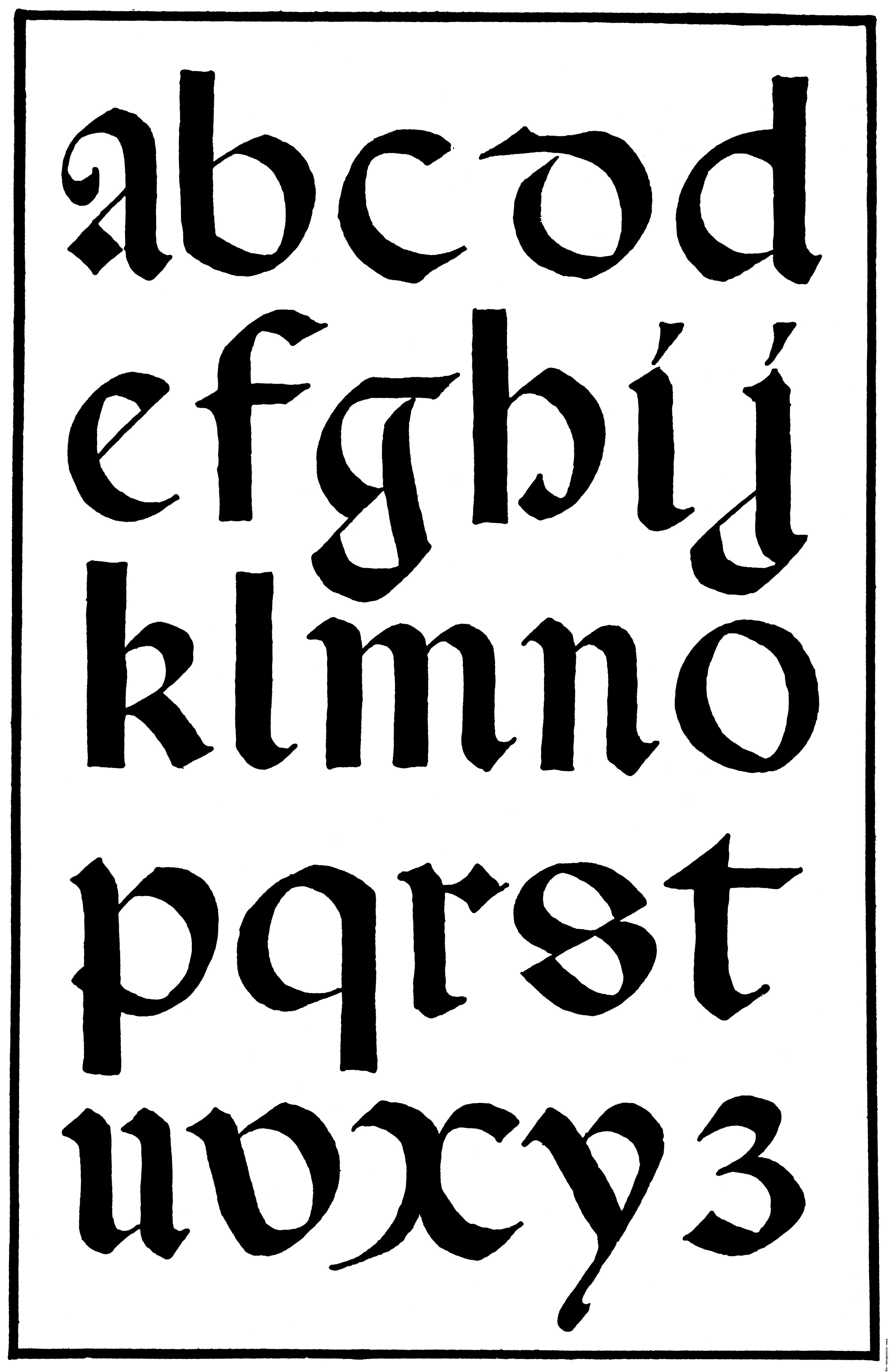
14 Medieval Font Alphabet Letters Images Gothic Font Alphabet Letters
Origins of Blackletter Blackletter, also known as 'Gothic,' was created during the 12th century at a time when more and more people began to read and write. The demand for books where increasing, and they had to be written fast to meet that demand.

Goth Letters Related Keywords & Suggestions Goth Letters Long
Cursive scripts (Cursiva) Cursive scripts were developed for business use such as the copying of documents and letters. They gradually became used for the speedier and more efficient copying of literary texts too.

Contemporary Gothic Alphabet on Behance
Slowly the script evolved into what may be regarded as the second major book script of the Middle Ages: Gothic (used from c. 1225). Where Caroline was a unifying script, the transitional script of "The Long Twelfth Century" (1075-1225) divided Europe in distinct regions. Scribes in Europe adopted the new, hybrid writing form at different speeds.

gothic calligraphy alphabet vector Calligraphy alphabet, Calligraphy
The Gothic alphabet is an alphabet used for writing the Gothic language. It was developed in the 4th century AD by Ulfilas (or Wulfila), a Gothic preacher of Cappadocian Greek descent, for the purpose of translating the Bible. [1]

Script Alphabet, Gotisches Alphabet, Tattoo Lettering Alphabet
Gothic Alphabet in Calligraphy. If you're a calligraphy enthusiast, then you're likely familiar with the Gothic alphabet. This script is a popular choice for calligraphers, as it offers a unique and elegant look that is perfect for creating dramatic or historical pieces. Gothic Alphabet in Calligraphy
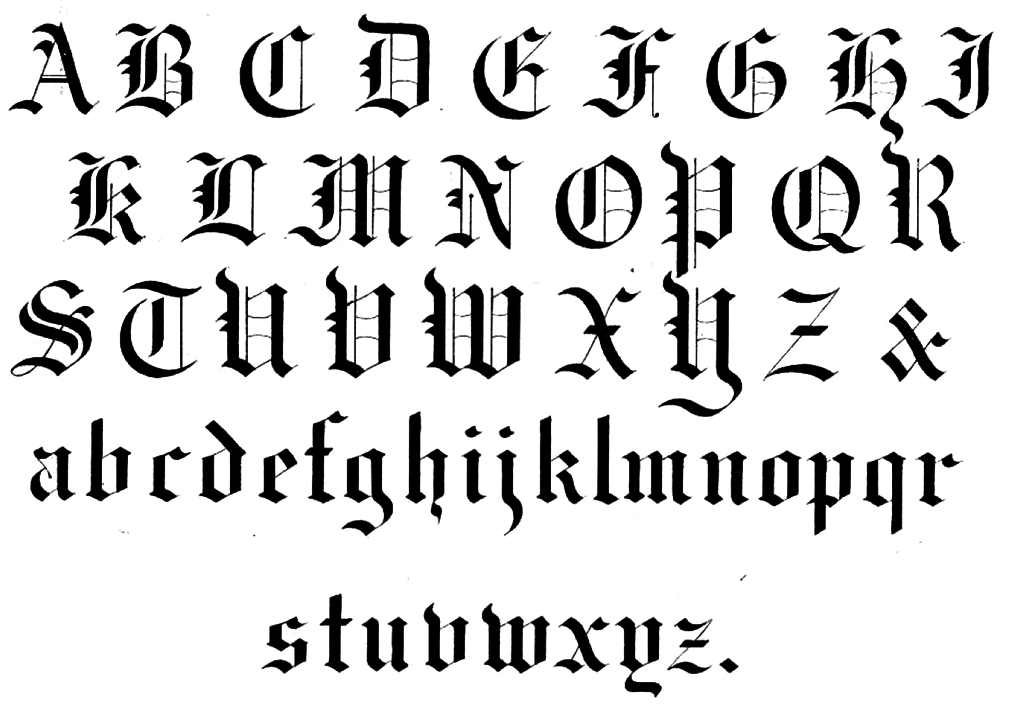
14 Medieval Calligraphy Fonts Images Medieval Calligraphy Alphabet
The Gothic alphabet had 27 letters, 19 or 20 of which were derived from Greek uncial script, 5 or 6 modified slightly from Latin, and 2 either borrowed from runic script or invented independently. The writing system generally corresponded to Latin and Greek scripts, but there were some differences in phonetic values and in the order of the letters.
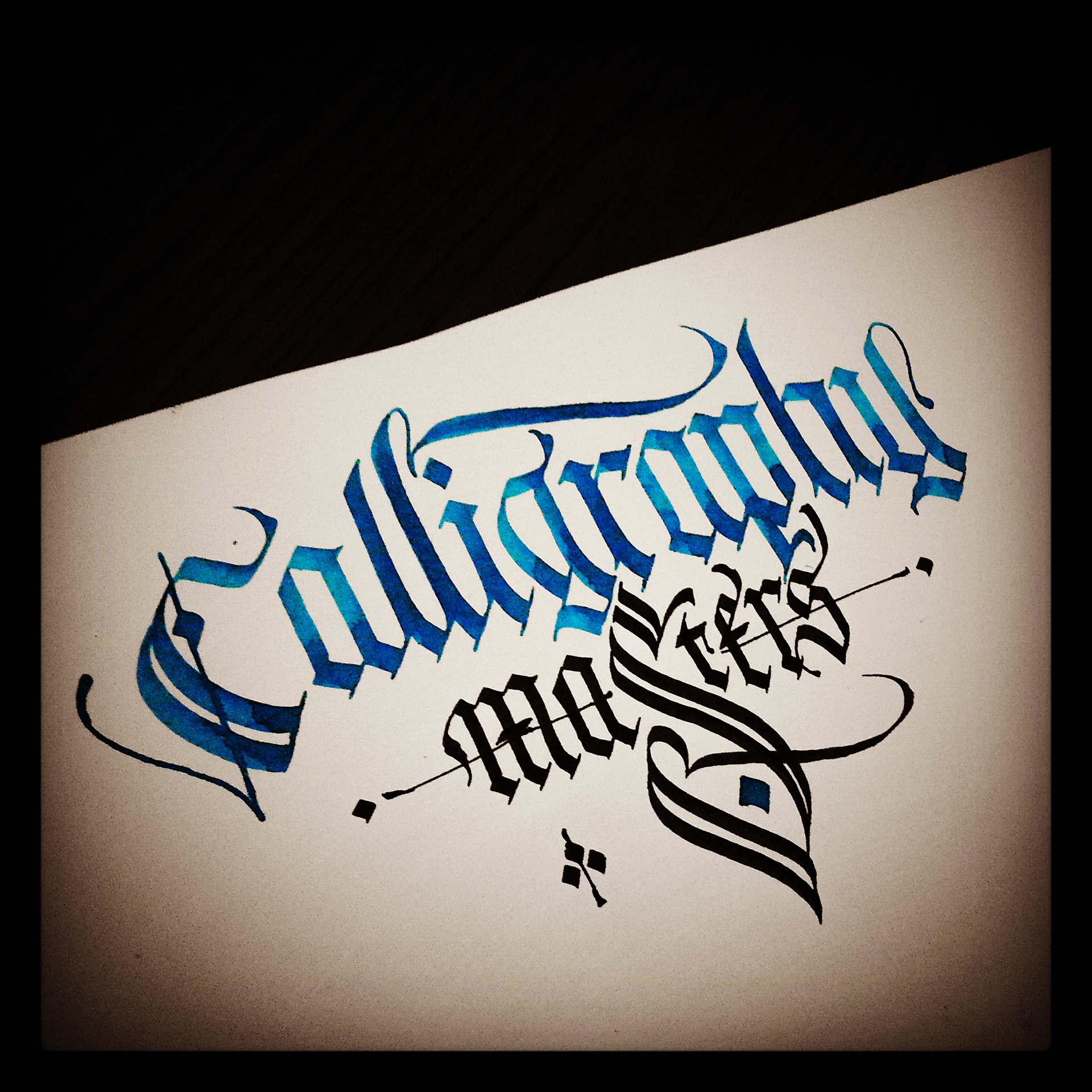
Gothic Calligraphy&Lettering on Behance
Copperplate Calligraphy Alphabet. These are the classic dip pen/pointed pen scripts. Similar to the modern calligraphy that I first listed, but much more strict on size, spacing, consistency and formatting. I suggest taking either of these scripts on as a second or third task as they are a whole other beast to tackle.

Gothic Lettering Calligraphy Cheat Sheet Gothic Lettering, Hand
Kanzlei ("chancery") was a cursive (connected) black-letter style used in medieval Germany. Similar cursives were used in the Netherlands, France, and England, where it was known as the secretary hand, a translation of its French name, secretaire.